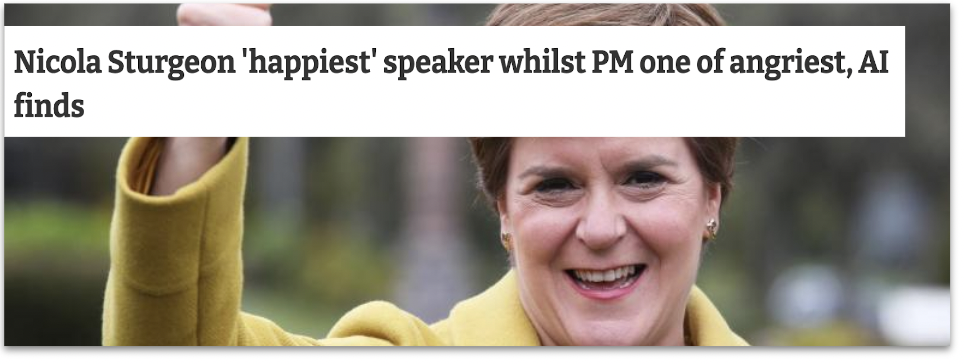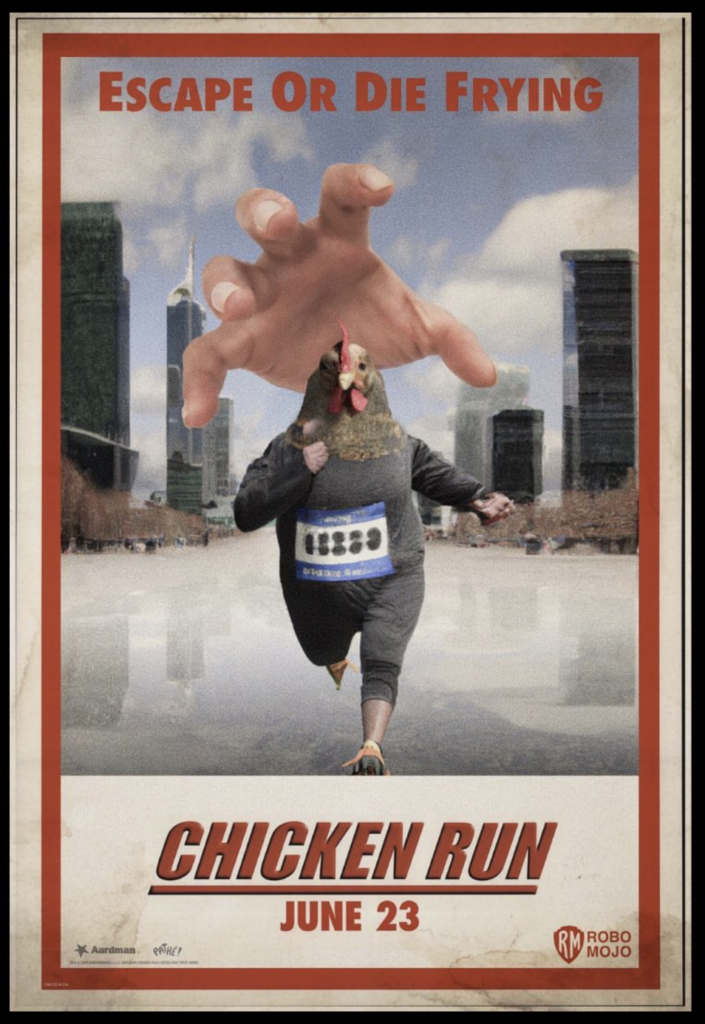Producing content built with AI shows that the help of artificial intelligence can open up plenty of new avenues for newsworthy storytelling.
As we’ve seen over the last few years, AI can assist content creators with a number of methodologies, including facial recognition, image generation, voice recordings and even sarcastic chatbots.
With the rise of ChatGPT (if you haven’t used it yet, what have you been doing?), we could even go as far as to say that AI has scared some of us content creators into feeling like jobs are at risk.
Luckily for now, AI hasn’t completely taken over – just yet.
With a report stating that 3 in 4 marketers are using AI for content creation, AI content is certainly on the rise with blogs, publishers and brands seeking out these tools to boost their efficiency and output. Whilst the tools are handy, it can be difficult for consumers to sift out the AI from the authentic. This, however, isn’t necessarily a bad thing.
Looking at examples of content built with AI, there are a mass of marketing campaigns that have gone on to earn linked coverage from news publishers in various sectors.
1. How bad is your streaming music? by pudding.cool

This project is more about posing as artificial intelligence to roast a topic that many people care enough about to share: personal music taste.
Spotify’s marketing success from their ‘Wrapped’ feature has become an annual event on social media — earning over 1.2 million tweets in a single month, and leading to huge increases in downloads of the app (plus many many more brands trying to replicate it).
The Pudding’s subversion of what makes Spotify Wrapped so popular was a genius way to appeal to the cynical side of music fandom.
Their “faux AI” tool gives the impression that a sophisticated AI bot is judging your prized personal music taste in real time, before returning sharable results that are partially tailored to the user.
Since launching in late 2020, it has been picked up by more than 1,300 linking root domains.
More than 1 in 5 of the headlines mention AI or artificial intelligence, suggesting that the AI’s participation in the experience is a key selling point in the story, as well as helping to make the project possible in the first place.
2. Having a pet does make you happier, if selfies are anything to go by by Verve Search

AI image recognition technology has the potential to reveal insights on a scale that the human eye wouldn’t be able to achieve. Truth is, content built with AI doesn’t always have to be copy-based.
Using Microsoft Azure in a case study, we wanted to see whether the many selfies that exist of pet owners and their pets show a happier image than a standard image of someone without a pet.
By comparing an anonymous sample of tens of thousands of pet owner selfies to standard selfies of people, we could compare the average level of emotions displayed in either category of picture.
Combining this AI tool with geotagged image data allowed us to reveal insights related to pet owners on a more international scale.
In other cases, we were also able to use this same process to measure the happiness of the average Instagram #selfie taker and the average #newhomeowner stood outside their front door and flashing their keys.
This campaign by Neomam studios for HouseFresh also used the same tool to identify the presence and strength of smiles in order to rank the happiness of locations in the USA.
3. Are humans better than artificial intelligence at detecting fake imagery? by ID R&D

Facial recognition technology carries plenty of controversy with it, including issues around misidentification, general privacy concerns, and who it’s being targeted at.
This research comes from a company that specialises in biometric authentication software with what is likely to be an attempt at downplaying some public fears over their technology.
While the statistics back up what they would hope to find — that AI isn’t fooled by spoof photos compared to the 30% of humans who do struggle to identify fakes — this story highlights an appetite that journalists have for exploring where humans and AI clash or collaborate in their capabilities around performing certain tasks.
4. Which U.S. sports teams have the biggest ‘fair–weather’ followings? by Verve Search

Sentiment analysis tools can help us to draw insights around attitudes and emotions from large volumes of (usually) text-based data.
At Verve Search, one of our favourite use cases is to analyse the emotions behind different topics that are being talked about within various corners of social media.
In this example, we separated thousands of comments on US sports team’s official Facebook fan pages after wins and after losses to see which fan bases are more likely to remain supportive when the good times go bad and vice versa — also known as fair-weather fandom.
Initially, we would have loved to measure this on metrics such as fluctuating ticket sales or stadium attendances over a longer period of seasons.
But with that type of data mostly inaccessible and stadium attendance figures often debated for their accuracy, we found online fandom to be a good proxy with the help of SentiStrength, which could measure individual comments on a scale of positivity to negativity.
Other newsworthy examples of this type of analysis include when we found out which household chores cause the most stress or which elements of driving cause American motorists to complain the most.
5. Males are represented four times more than females in literature by The USC Viterbi School of Engineering

This is a great example of content built with AI using machine learning to continue building on a subject of research from previous years.
An analysis of 3,000 English-language books by the USC Viterbi School of Engineering used NLP’s (Natural Language Processing) ability to detect the prevalence of pronouns, and thus how often men and women are represented in literature.
With this type of AI able to process vast quantities of text-based data and return such results, there is clear potential here for building on this method in other forms of media and entertainment where gender representation remains an issue.
6. What emotions do leaders speak with in public? by Verve Search

Public speaking is usually a prerequisite of being one the most powerful people in business or politics.
So for this campaign we applied AI voice recognition software built on deep learning techniques to judge the emotional profile of famous leaders’ speaking styles.
Pulling together a large seed list of audio files from the public speeches of politicians and famous entrepreneurs, we could look at how certain emotions are more prevalent in certain individuals, political parties and genders of speaker.
Understanding what emotions are being portrayed within a person’s voice would normally have to be studied individually.
With AI-driven voice recognition, you can analyse large amounts of voiced audio files and retrieve results that are compared against the average emotional levels that the software is trained on. Or you can compare the relative emotional levels from your own dataset (in this case, the average leader) to see which voices rank highest and lowest vs those average scores.
7. Can you guess the famous Christmas movie scene from this AI mock-up? by Neomam Studios

As already noted, artificial intelligence is often talked about as something that clashes with humans — our judgement, our capabilities, or our jobs.
And although this content is built on AI-generated images, an essential aspect of its appeal requires the input of its audiences to guess what creation the AI tool has conjured up.
For this campaign that leant on a TikTok trend, each image is a famous scene from a Christmas movie that was mocked up in different styles by the app Wombo.
Thanks to this thread, where I found the campaign, you can also see content built with AI to help with other areas of the creative process:
There’s a Buzzfeed quiz for countless trends and topics. So, it’s not surprising to see that they also had a stab at the ‘audience vs AI guessing’ quiz format in July 2022, which you can try here.
8. Supercars from a dystopian future by Screaming Frog

AI image generation tools, such as DALL-E and Midjourney can capture our imagination in just a few words and visualise a detailed version of our thoughts much quicker than we would be capable of creating in the same format.
In this content example, the AI also had to capture the imagination of the journalist to whom the content was outreached to.
In our experience, motoring journalists who report on visual content are often an exception. They are used to dealing in data, reviews, previews, and shiny photography of even shinier vehicles.
Thanks to the creative angle used here by SEO Agency Screaming Frog, the supercars from a dystopian future is a fictional story that still managed to cut through to a sector that would normally be more concerned with stories related to cars that you can actually drive.
9. AI-generated travel posters of destinations by Screaming Frog

According to OpenAI, DALL-E is generating over 2 million images a day.
While the volume of AI-generated imagery already seems to be saturating the internet, the strategy of defining these image outputs to link them together under one newsworthy theme could still be in its infancy.
These examples of AI-generated imagery, also from the team at Screaming Frog, were fed by the names of countries and their travel slogans to see what Midjourney returned.
The posters are visually beautiful. However, when covering the story, the journalist seems particularly intrigued by what the AI — with no physical travel experience to rely on — chooses to prioritise in its interpretation of an entire country:
“Until you’ve seen a place for yourself, it’s a bit of an abstract idea, so why not ask Artificial Intelligence to generate your travel poster?… Like most travel posters, Midjourney has evoked a fairly sketchy sense of place, sometimes punctuated by notable landmarks or natural features.”
hyperallergic.com (2022)
10. AI reimagines famous horror film posters by Evoluted

Many horror movies can be recognised by their iconic movie posters or from the faces of their terrifying villains.
The speed of AI image generation allows for trialling out different ideas for visual content. And any examples which appear to make the grade with some design touch-ups can also be targeted to a specific, short-term event in the calendar, such as Halloween.
This example by Digital PR Agency Evoluted took some of the most famous horror films of all time to see what even more terrifying versions of their posters could be reimagined by the AI app Wonder.
Check out this Twitter thread for a breakdown of the posters and more information on how they were created:
For more AI-generated movie poster goodness (and weirdness), take a look at this series of posters created by artist Vincenzi in his project ROBOMOJI.
Using a similar method as the Evoluted example, Apartment Therapy tells us that the artist inputted “a series of prompts and descriptions about a film’s visuals, titles, and premise into the AI software.”

As noted, the artist didn’t set out to earn linked coverage with his project. They are using it to ask important questions around what role AI will play in the art world going forward.
So, should we be creating content built with AI?
While artists and industries are rightly questioning what the adoption of these new technologies means for the future of creatives, some, like Manas Bhatia, are already acknowledging the part AI can play in quickly helping to visualise early concepts before an artist refines them with their expertise.
Back in 2022, we saw a campaign from Samsung earn widespread coverage after they enlisted the help of a digital designer to reinterpret famous artworks, according to the issues Gen-Z are most concerned about in 2022.
Relying on insights from a survey to inform the creative direction that an artist took provided a much more human and, therefore, newsworthy angle to this ‘reimagined’ content than what the artificial mind of a tool such as DALL-E would provide.

L.S. Lowry’s ‘Coming Home from the Mill’ (1928) reinterpreted by artist Quentin Devine (2022). Source: samsung.com/ The Art of the Problem (2022)
The extent to which you use AI and its different domains as part of your creative process will vary from one campaign to another. Some ideas will see content built with AI take the role of prototype designer, others will do much of the data processing to then allow your team to find the stories that matter within the data.
On the whole, it would be a mistake to think that the inclusion of AI alone will sell in a story to the press as newsworthy.
Without a defined creative concept to work with, these examples of AI are tools waiting to process whatever we feed them. As part of our role in creating newsworthy content out of AI, we should at the very least be setting the AI’s constraints, ensuring the inputs and outputs make sense, and closely monitoring what the overall direction is of the story that we’re trying to tell.
Further reading:
- Deep Dive: AI Image Generator DALL-E Is Now Open To All — Why Should PRs and Marketers Care? by Rich Leigh [1]
- The future of content creation with AI is closer than you might think by David Cohn [2]
- The lawsuit that could rewrite the rules of AI copyright by James Vincent [3]
- Messing around with AI and content concepts by Alex Cassidy [4]
Interested in content marketing and digital PR services? Get in touch with us.







